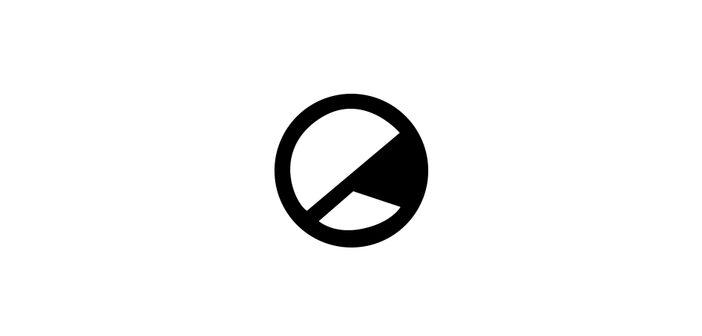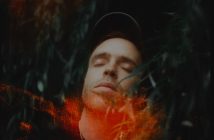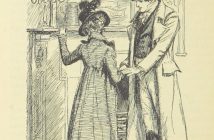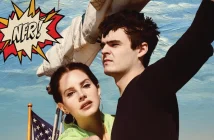As part of The Edge’s Raindance Film Festival coverage, we got the chance to sit down with Stephen Elliott, directer, writer, and star of the multi-nominated After Adderall. Described as a very “literary” film, it follows Elliott himself as he deals with the cinematic adaptation of his memoir The Adderall Diaries which had its rights optioned by none other than James Franco, all whilst being alienated further and further by his own creation as he is less and less involved in the project. And as we sat down to discuss the film, it seemed inevitable that we’d eventually delve into topics ranging all the way from aspect ratios to the exact worth of Franco himself…
What can you tell us about your decision to make a film about the cinematic adaptation of your memoir?
It was very random. I’ve made two movies already and I didn’t think I was going to make a third movie. My second movie was really hard and I was just thinking I can’t do this, it costs too much and I just didn’t have anything that was creatively fulfilling enough. But then I saw The Adderall Diaries at Tribeca and it just inspired me. This script came out of me in like two weeks. So I saw The Adderall Diaries in April 2015, I wrote the script, shot it in August in eight days. I was just totally inspired; it was made with just my own money. I was working full-time, I spent $10,000 dollars on making this movie and that was really creatively fulfilling because I was paying for it. And with this film, there was never any chance of it making money, we were stealing footage, we didn’t have contracts for any of the actors, we couldn’t afford the Screen Actors Guild deposit, so it was all just fun and creative where everyone was just trying to make something good. And yeah, I was just so inspired. Suddenly I just wanted to make a movie that I wanted to make, so that’s what I did.
A lot of the film centres around the relationship between you and Sarah, the roommate, but considering the foundations of the film lie in the original adaptation of The Adderall Diaries book, why did you spend so much time focusing on that relationship?
Well, Sarah is based on a real person. But more importantly, the film is trying to answer all these questions, all these issues about identity and questions like ‘who owns the story?’ And the conflict between me and my roommate is a conflict about who owns the story. She’s saying “I don’t want to be in your movie, I want to be the star of my own movie.’”So the relationship between me and my roommate is illustrating this idea about identity, all these ideas that I’m trying to talk about in the movie. The movie is very much about these ideas, which the book is like also, but the movie version of The Adderall Diaries is not about ideas, it’s more about the actions of the book. The book is about things like what is truth, and who are we, and what is identity, and it’s this meditation on these things. And the movie After Adderall is also a meditation on these things. So, in a way, After Adderall is more true to the book than The Adderall Diaries.
Is that something else that inspired you to make it?
Well originally I was inspired to make it when I was on the phone to my friend. I told him that I’d seen The Adderall Diaries and it didn’t seem true to the book at all, which isn’t a problem, but he said that it sounded like the movie of The Adderall Diaries hasn’t actually been made yet, and that I should make it. And I was like ‘huh…’ So in a way although the movie is about The Adderall Diaries being made into a movie, it’s actually a movie that’s more about the ideas that are in The Adderall Diaries book that aren’t in The Adderall Diaries movie.
How much of the film is true and how much is exaggeration?
It’s mostly true. Gerard, the police officer, the boyfriend, is not true. So he’s the creation.
Why did you choose to include him then?
I needed a creative story for Sarah. And he illustrates certain things – he is the cuckold fantasy. So you have to have someone there for the cuckold fantasy. But most of the other things are completely true, like it is in the book. I was not originally invited to the Tribeca screening, I wasn’t allowed on set, that’s all true, that’s how it happened.
Why did you decide to edit it all in black and white?
We used three different cameras and to make all the cameras match, that was the best way to do it because it was such a low budget movie. That’s one reason, but also it was shot in 4:3, and we’re trying to signal to the audience that they’re watching an art film. And so when you see something in black and white in a 4:3 aspect ratio, you know you’re watching an art film. I feel like people enjoy a movie more if they know what they’re watching. So it signals right away that you’re watching a certain type of movie. And I love 4:3 as an aspect ratio, it’s a beautiful, perfect aspect ratio.
Why is that?
I don’t know why it is, but I think for composition it looks more like a painting. The Mona Lisa, its aspect ratio is 4:3. So this movie is shot like the Mona Lisa, in that sense. I’m not an artist so I don’t know why it’s so beautiful, all I know is that it looks so beautiful. And it does so much more than widescreen, it focuses you on the character and not the landscape.
About you and James Franco – did you purposefully sideline him in the film, or did you approach him to be in it?
I wanted to approach him to be in the film, but I didn’t. I thought about it, I would’ve loved someone to do the voiceover for his parts on the telephone. But my fear was that he’d say yes and then because he’s so busy, we’d end up waiting for him and it would take too long. I wanted to keep moving forward with it. I had an email exchange with him the other day, I really think he’d like the film, but I think it’s better without him.
Is he planning to see it, do you know?
I don’t know. I’d love for him to see it. The problem is I don’t want to send people vimeos, I want people to see it on screen. But hey, maybe I’ll send him a vimeo so he can see it. I’d rather him see it in a proper cinema theatre, but this is a guy who has people asking for moments of his time wherever he goes. One minute of James Franco’s time is probably worth a year of my time.
Are you glad that you got to work with him then?
Yeah definitely. So my first movie cost $7,000, this movie cost $10,000, and it’s got all these people in it, like Dev Patel, and that’s because James Franco was in it. We had him for one day. So James Franco for one day is worth $7,000. Which is more than I make in seven years. So that gives you an idea of what his time is literally worth.
After Adderall was screened at the Raindance Film Festival in London last month.




